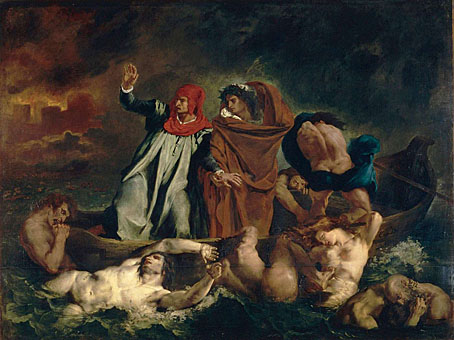
The Barque of Dante (1822) by Eugène Delacroix.
More infernal visions. Depictions of Hell aren’t exactly recent but the 19th century saw an increase in Dantean themes, helped, no doubt, by the Romantic taste for violent drama. There are many more such paintings, especially of the doomed lovers Paolo and Francesca whose plight is almost an artistic sub-genre. I’ve avoided the popular depictions by William Blake and Gustave Doré although the latter is represented below by a painting you don’t often see.
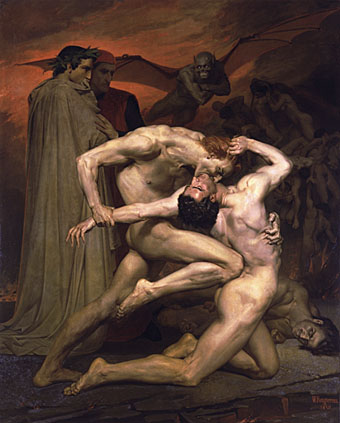
Dante and Virgil in Hell (1850) by William-Adolphe Bouguereau.
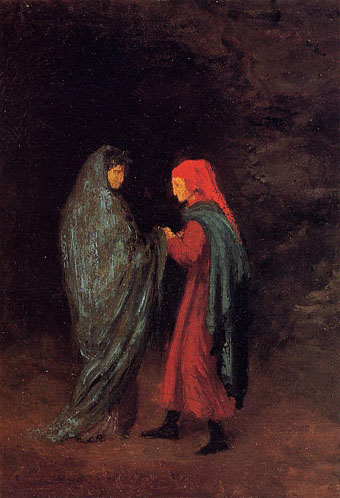
Dante and Virgil at the Entrance to Hell (1857) by Edgar Degas.
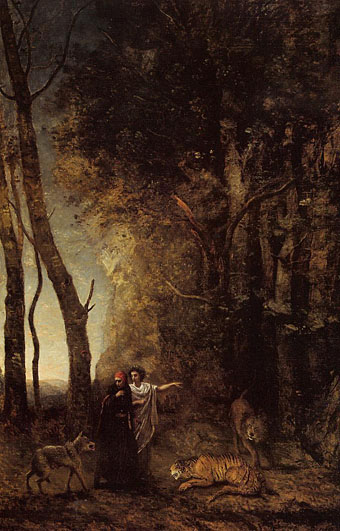
Dante and Virgil (1859) by Camille Corot.
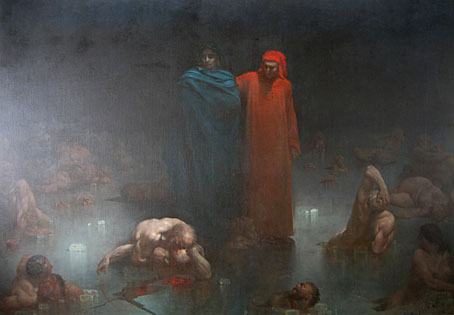
Dante and Virgil in the Ninth Circle of Hell (1861) by Gustave Doré.
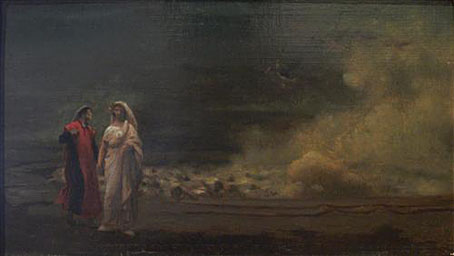
Dante and Virgil in Hell (date?) by Jean-Léon Gérôme.
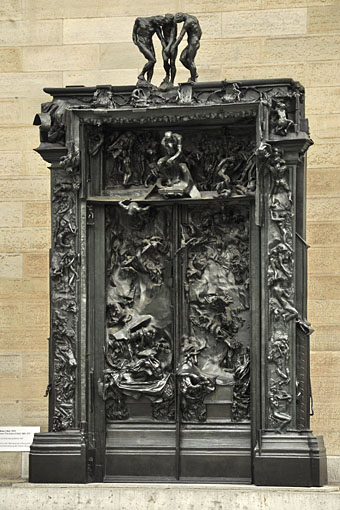
The Gates of Hell (1885–1917) by Auguste Rodin.
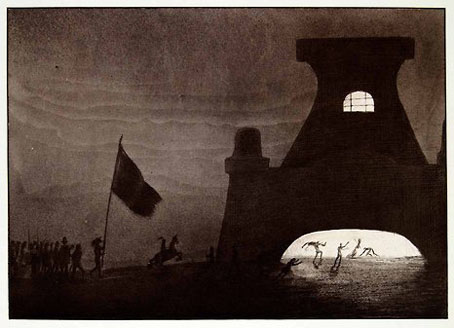
Gateway to Hell (1900) by Alfred Kubin.
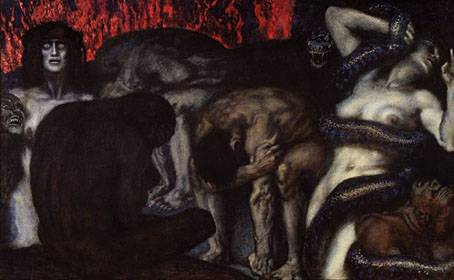
Inferno (1908) by Franz Stuck.
Previously on { feuilleton }
• Mirko Racki’s Inferno
• Albert Goodwin’s fantasies
• Harry Lachman’s Inferno
• Maps of the Inferno
• A TV Dante by Tom Phillips and Peter Greenaway
• The last circle of the Inferno

It’s too bad the wonderful and theatrical art J.L. Gerome did not paint more views of the Inferno, They would have been amazing. His consummate skill would have brought the scenes to life.
I recently purchase a DVD of Giuseppe de Liguoro’s silent film “Inferno” from 1911. It has a sound track by one of my favorite groups Tangerine Dream. I assume you have seen it. They did a wonderful job given the limitations of 1911 film making. However, the depiction of Satan at the end was a bit goofy. Also, the condemned, if eternity in hell was not enough, look as if they would be spending the time wearing diapers.
Given the popularity of the horror and fantastic genre, I wonder why no one has attempted to make and Inferno movie today. With today’s computer magic, it would be incredible. There is plenty of post Dante figures that deserve a place in the circles.
I’ve only seen clips of the silent film, never watched the whole thing. I’m more familiar with Harry Lachman’s Hollywood melodrama which I wrote about in a previous post. The Inferno there owes much to Doré, and is very thoroughly realised, even down to bits of subtle nudity. You couldn’t make a straightforward Hollywood version today since the material would be deemed too obscure. Who was Dante? Who was Virgil? Who was Beatrice? Etc.
One solution would be to film Inferno, the novel that Larry Niven & Jerry Pournelle wrote in the 1970s. This has a dead science-fiction writer waking up on the outskirts of an updated Dantean Hell, and being led through it by Mussolini. It’s an interesting idea although, as with all Larry Niven’s books, it’s spoiled by the narrator’s determination to figure out how everything works. The conclusion–that God is a sadist for running his own eternal torture chamber–would also be a hard sell for religious types.
The silent version of “The Inferno” also borrowed heavily from the Dore illustrations. In fact most of scenes in the film are direct quotes from Dore’s imagery.
I am not so sure that a contemporary movie would not be popular. After all, America still is a country were religious people are in the majority. A movie about sinners being punished would be appealing. Why not consign to new circles, Wall Street Crooks and corrupt bankers, mafia serial killers, pedophile priests, religious fundamentalist, slave traders…etc. They would have to expand the circles by a factor of 100. Satan would need more than 3 faces to chew up all of the deserving folks since Dante’s time.
I agree that Larry Niven’s book would make a great Sci-fi movie. However, they would have to replace Mussolini first. By the way, I have a signed copy [by both writers] of the book. Actually a better book to film would by “My Visit to Hell” by Paul Thigpen. A contemporary visit with updated sins and punishment.
I would add that it’s too bad Bouguereau did not do more on this theme. The painting you reproduce is wonderful [I’ve seen it before] where is considerable talents are used to great effect. It’s unfortunate that the market place forced him to spend most of his time painting shepherd girls, peasant girls and mildly pornographic nymphs and satyrs.
I recently read a collection of Hellfire and Brimstone sermons from the 19th and 20th century. I thought the most frightening one mentioned the absence of God for all eternity. After a person dies, he would be exposed to the totality of the ecstasy and euphoria of God’s presence. Then suddenly ripped away and denied any chance to have the experience for eternity. You would wander thru an endless dessert filled with shipwrecks without hope. I remember a line from Dr. Faustus when he asks Mephistopheles if he is in Hell, He says yes that the absence and denial of God’s face is Hell.
The updated puppetry version sounds entertaining.
http://en.wikipedia.org/wiki/Dante%27s_Inferno_%282007_film%29